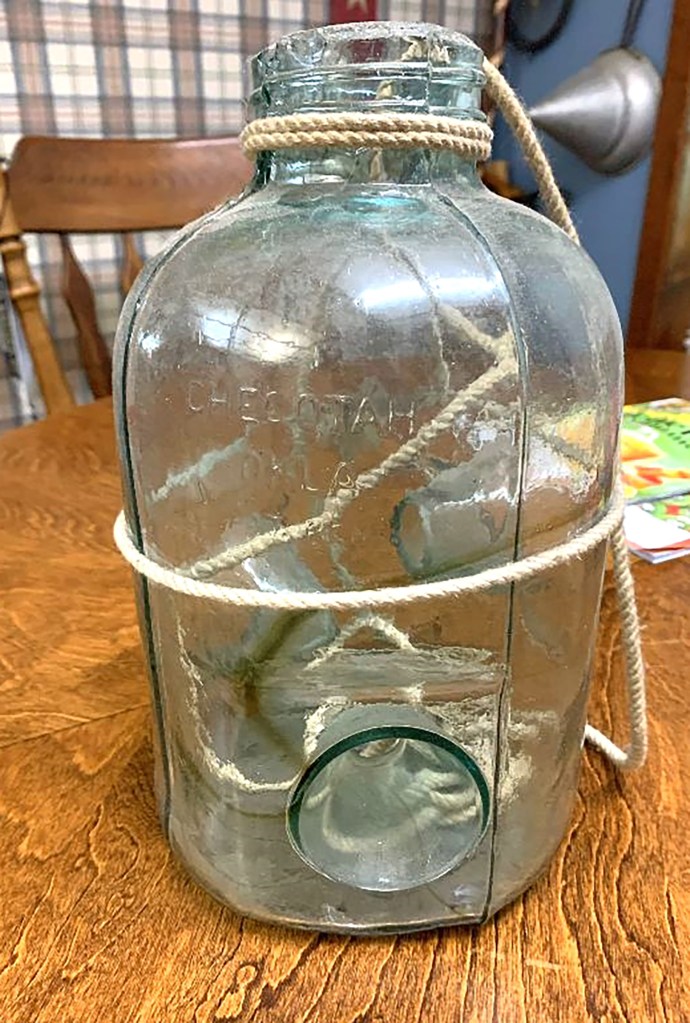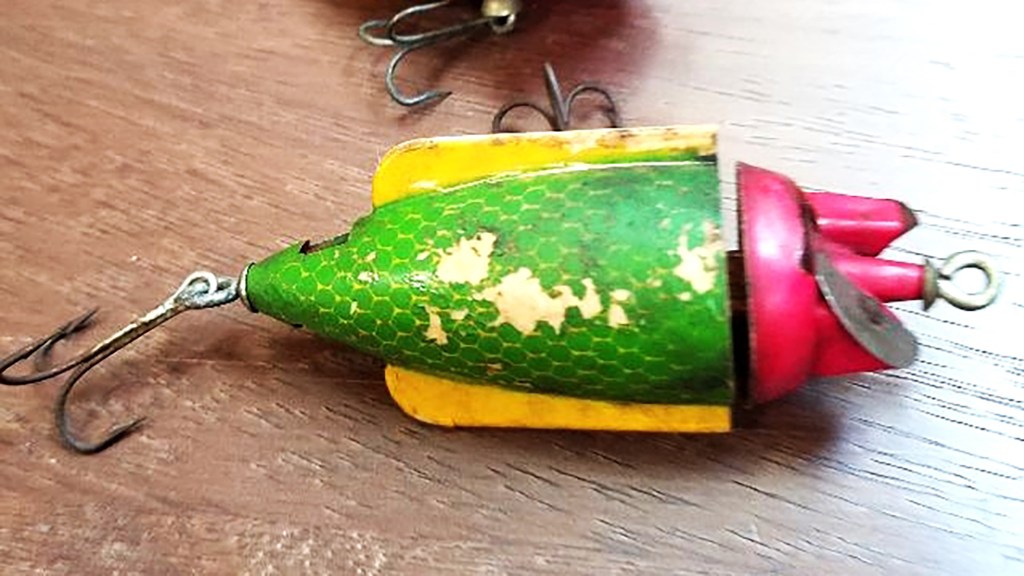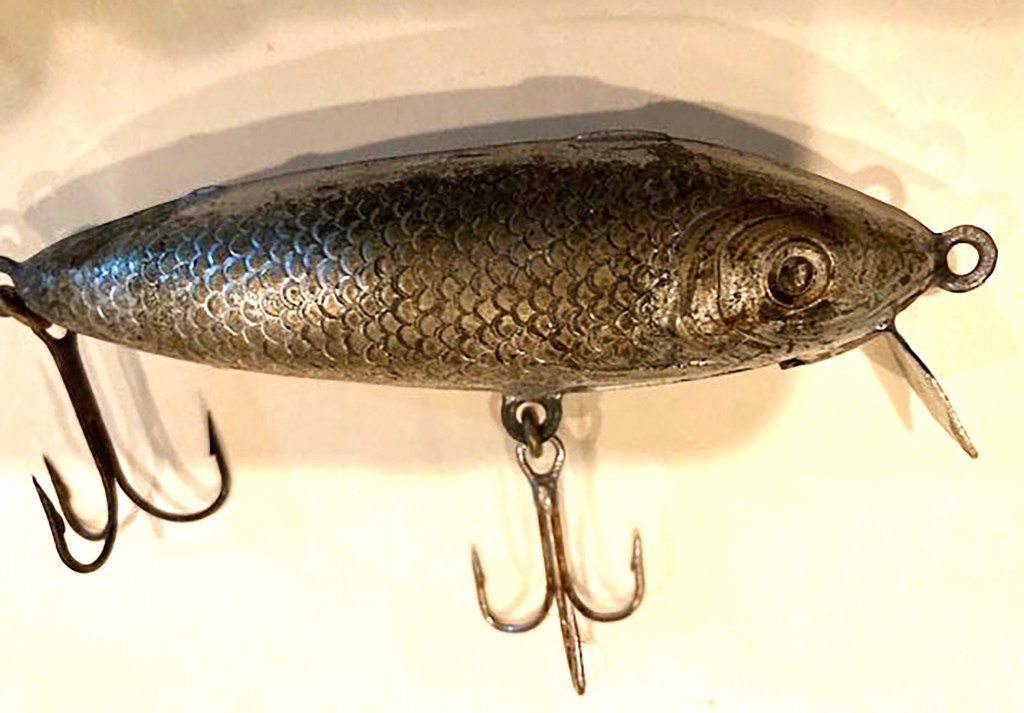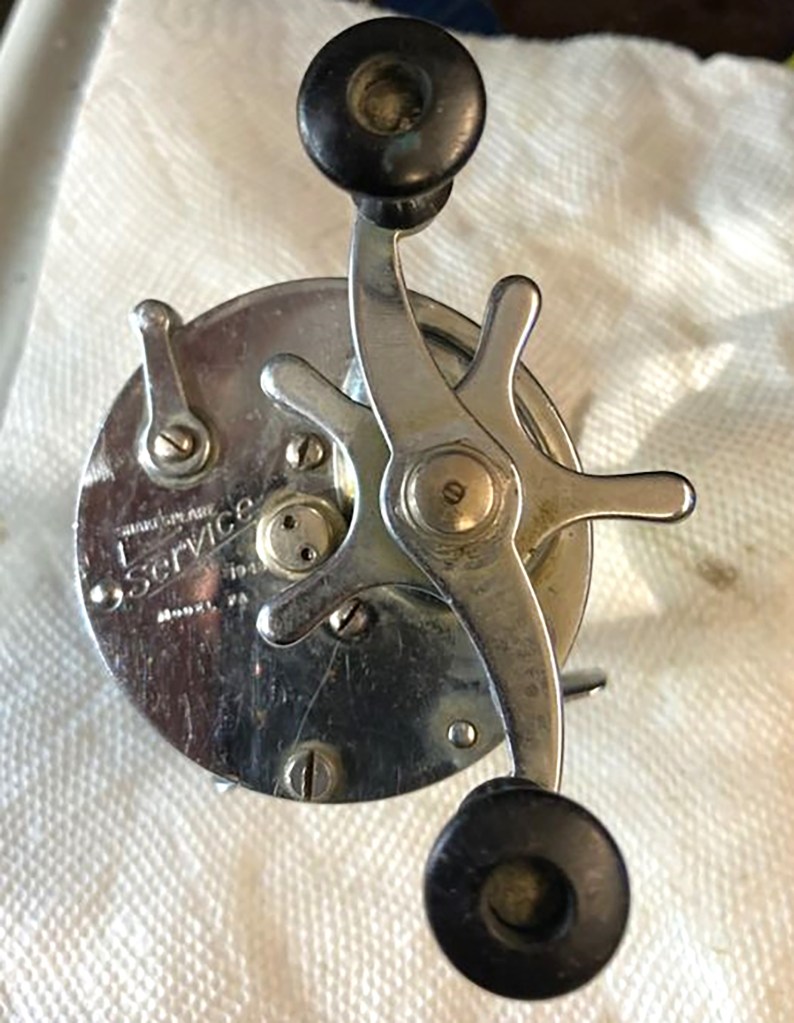
Rob Pavey, a journalist from Augusta, Ga., has collected old fishing lures for more than 35 years and has authored or edited several reference books on old tackle. His educational website is www.mrlurebox.com.

Rocky Wells, email
$125
This minnow trap, patented by Carl Camp in the early 1950s, was manufactured in Oklahoma and can be found in varying shades of green. They are handsome decorating items, which some collectors fill with bobbers or other angling artifacts. It is missing its original metal lid — which is not unusual. Sometimes a vintage canning jar lid works just as well.

Ron Pavelka, email
$40
The King Zig-Wag dates back to the 1930s and was a larger, sturdier version of Heddon’s popular bass-sized Zig-Wag. The big version, popular for salmon fishing, featured glass eyes and break-away string hook hangers that minimized tooth damage to the painted wood body. The herringbone pattern with crescent-shaped painted gills is usually found only on the King version.

Bobby Peoples, email
$30
This elaborate and colorful plastic lure, patented in 1956, was sold by Jemco Bait Co. of East Gary, Indiana. Its head rotated upon retrieve, forcing water through the center to a small exit hole in the tail designed to make it vibrate frantically. This one is lacking in condition but has great eye appeal.

John Cooper, email
$30
The hollow Magic Minnow was patented by A.V. McKenzie in 1931 and was a simple, fish-shaped diving lure stamped out of metal and soldered together. It was sold by Magic Minnow Bait Co. of Brookline, Mass. The lures included painted yellow eyes and bright red ventral fins, which are missing from this well-worn example.

No name, email
$10
The Model 1946 Shakespeare Service reel is a workhorse — practically indestructible, and therefore very common. Some people think the model number is the year of manufacture, which it is now. Most Shakespeare reels have a two-letter code to denote when they were made. This one is stamped “FA,” which denoted 1950.




